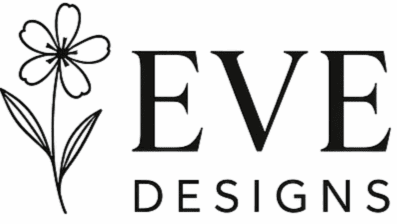Step into the future of creativity with this easy-to-follow guide on AI-generated art. Whether you’re just getting started or looking to sharpen your skills, this post covers everything from how it works to the tools that make it happen. Learn how neural networks and smart algorithms are reshaping the art world—and how you can be part of it.
We’ll also talk about the upsides, the challenges, and how to balance traditional techniques with this bold, new frontier. Ready to unleash your creativity with AI? Let’s dive in.own experience in AI art and what AI software you use.
Quick Takeaways
- What Is AI Art?
AI-generated art uses smart algorithms to create original pieces. It challenges what we think art can be. - Try Different Tools
Platforms like RunwayML and Artbreeder make it simple to experiment with styles and techniques. - Keep Up with Trends
AI art evolves fast. Stay in the loop by following artists and exploring new tools. - Work with AI, Not Against It
Think of AI as your creative partner—it can take your ideas in new, unexpected directions. - Break the Rules
Don’t be afraid to test limits. Mix styles, bend genres, and explore ideas you’ve never tried before.
How AI Art Generation Works
At the core of AI art is a blend of data, math, and a whole lot of creativity. AI tools use neural networks to scan massive sets of images and learn patterns. From there, they can create entirely new pieces based on what they’ve learned.
The process works a bit like remixing. The AI takes bits and pieces from what it’s seen and rebuilds them into something original. Over time, these systems get better at understanding what looks “good” or “interesting.”
What Affects the Final Image?
- Your Input Data: The quality and type of images you use matter—a lot.
- Settings and Parameters: These control the final style. Tweak them to guide the AI in the direction you want.
That mix of input, control, and algorithmic creativity is what makes AI art so fascinating—and unpredictable.
Getting Started with AI Art
Starting out might feel overwhelming, but it doesn’t have to be. With the right tools and a little curiosity, you can begin creating in no time.
Tools to Explore
Here are a few beginner-friendly platforms to try:
- RunwayML – Great for video, animation, and still images.
- Artbreeder – Use sliders to blend and evolve images.
- Dream by Wombo – Create high-quality art from text prompts, no technical skills required.
These tools don’t require any coding knowledge, so you can focus on exploring ideas and creating art.
Starting Your First Project
Pick a platform that fits your style and goals. Then, start experimenting. Try out different filters, models, and settings. Learn terms like style transfer and GANs (Generative Adversarial Networks)—they’ll help you understand what’s happening behind the scenes.
Don’t stress if your first few pieces don’t look amazing. The process is about trial, error, and discovery.
Going Beyond the Basics
Once you’re comfortable with the basics, there are plenty of ways to take your work to the next level.
Advanced Techniques
- Neural Style Transfer
Apply the look of one image (like a painting) to another (like a photo). - GANs (Generative Adversarial Networks)
Use two AI systems that challenge each other to produce ultra-detailed, lifelike images.
Pro Tips for Better Results
- Play with different models to find your favorite.
- Adjust the level of detail to suit your style.
- Don’t be afraid to combine results from multiple tools.
Small tweaks can make a big difference in the final image.
Mixing AI with Traditional Media
AI art doesn’t have to live on a screen. You can print it, paint over it, or combine it with other materials.
Use AI textures in your collages. Add hand-drawn elements on top of printed AI images. Turn digital pieces into installations. The possibilities are endless when you blend old and new methods.
Stay Ahead of AI Art Trends
AI-generated art is moving fast. To stay current, follow the people who are shaping the field.
How to Spot New Trends
- Follow AI artists on platforms like Instagram, Twitter, and YouTube.
- Attend virtual or in-person exhibits.
- Read blogs and forums about AI and art.
Trying out new apps or tools regularly also helps you stay ahead of the curve.
Selling Your AI Art
More collectors are looking for digital-first, AI-driven work. Platforms like Foundation, OpenSea, and others let you showcase and sell your art. Focus on creating original, high-quality pieces that highlight what AI can do—while still showing your unique style.
FAQs
A: Style transfer, GANs, and image generation are leading the way.
A: Take online classes, experiment with tools, and practice often.
A: Check out RunwayML, DeepDream, and DeepArt for starters.
A: Follow creators online, join art communities, and try out new tools regularly.
A: Yes—be mindful of where your data comes from, give credit when due, and stay transparent about your process.
Final Thoughts
AI-generated art is changing the way we think about creativity. With the right tools, a curious mindset, and a willingness to experiment, anyone can explore this new frontier. Whether you’re just starting out or already making AI-powered pieces, there’s always something new to learn.
Ready to transform your art with AI? Try out the tools, explore your creativity, and join the next wave of digital artists. Share your creations or drop a comment below—we’d love to see what you’re making!
RELATED CONTENT
